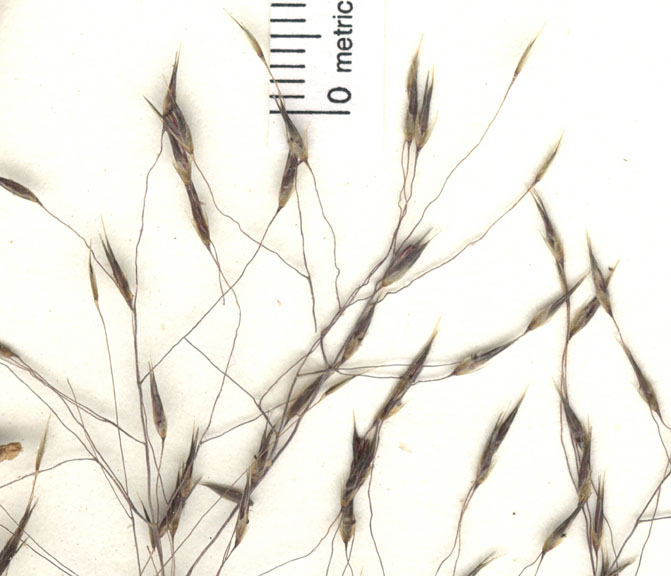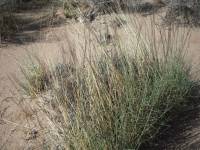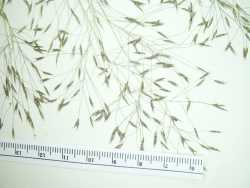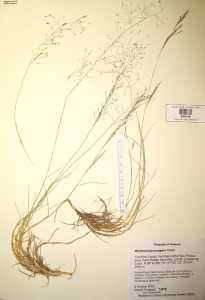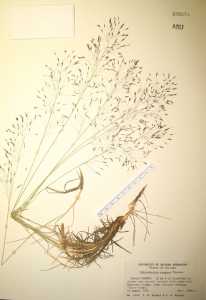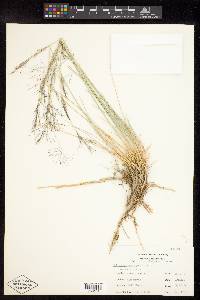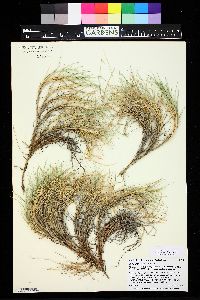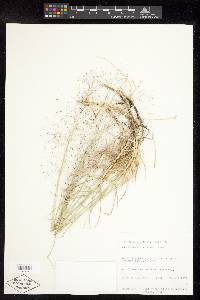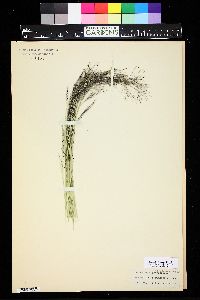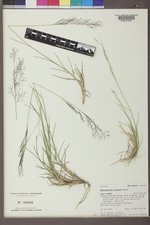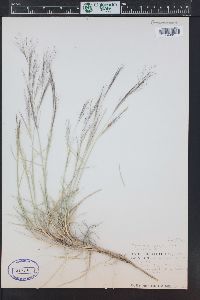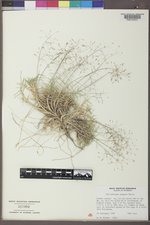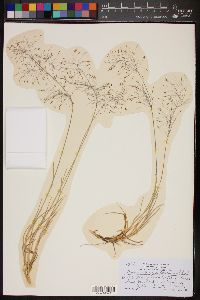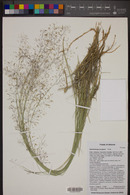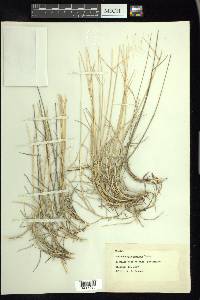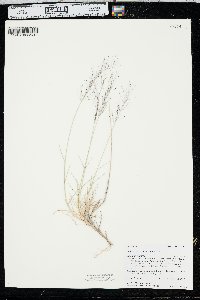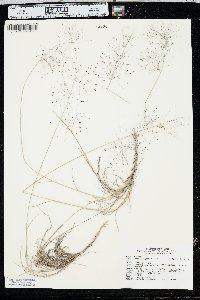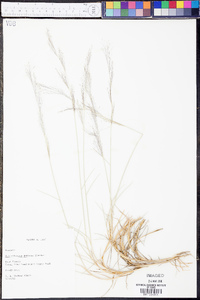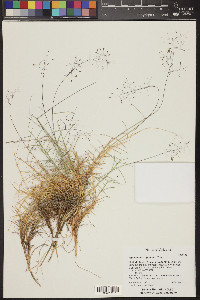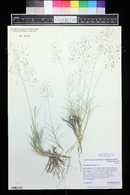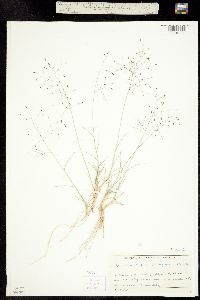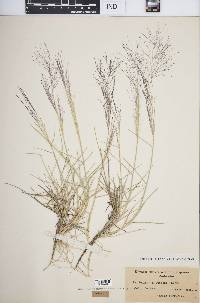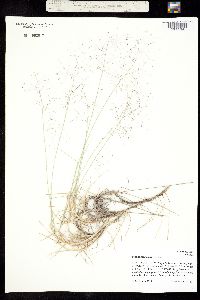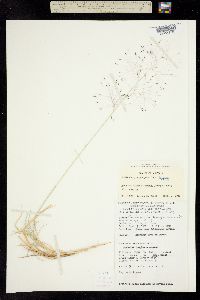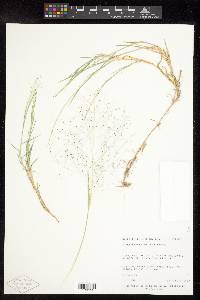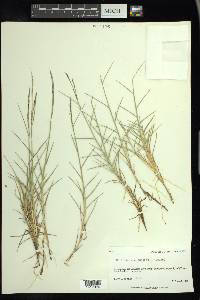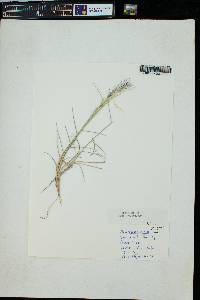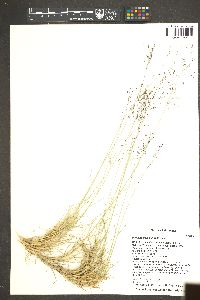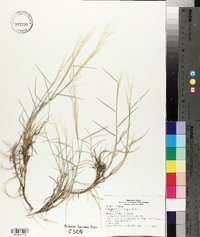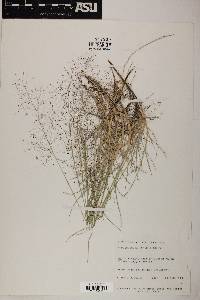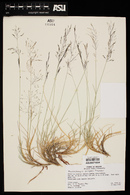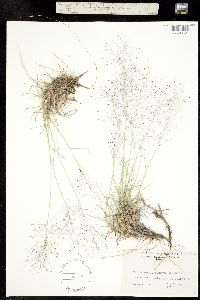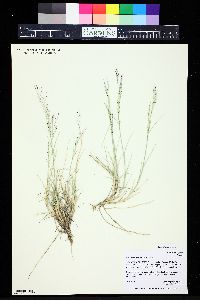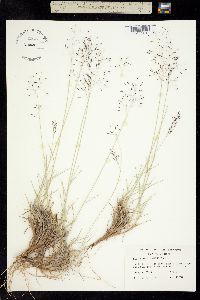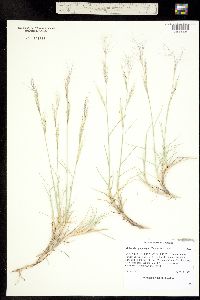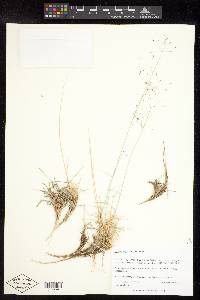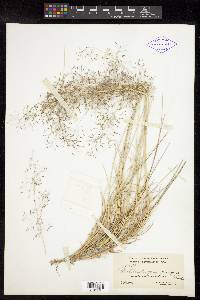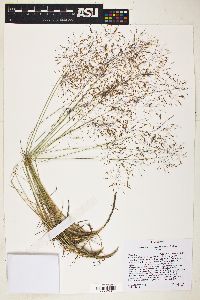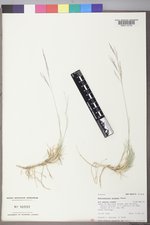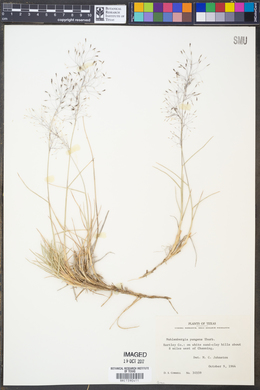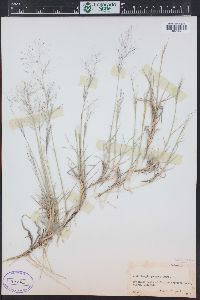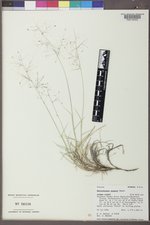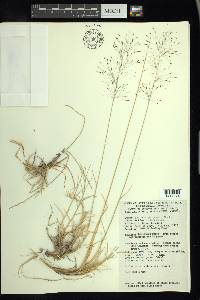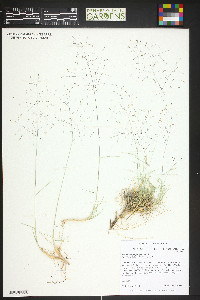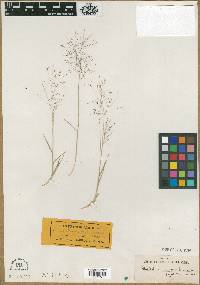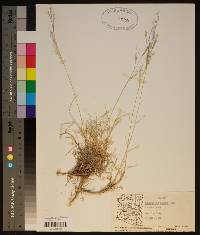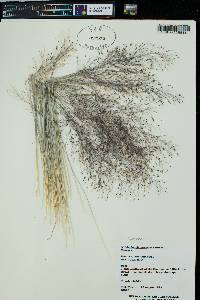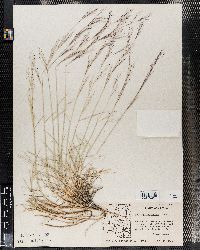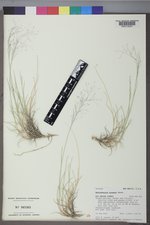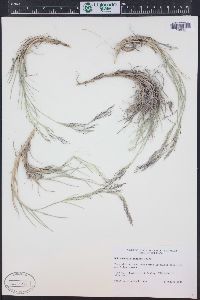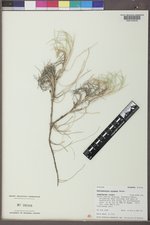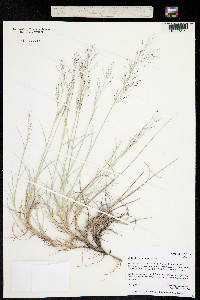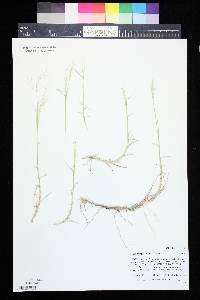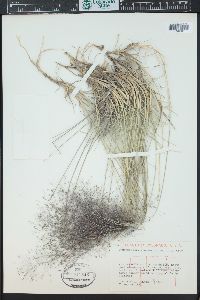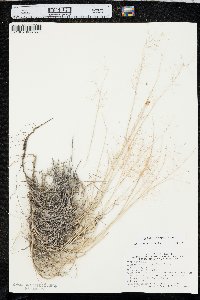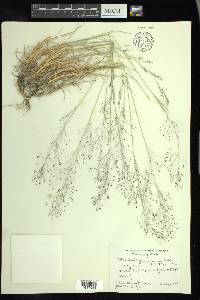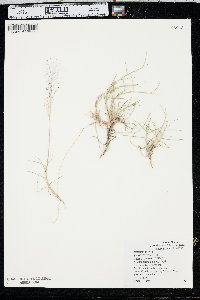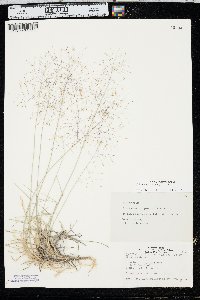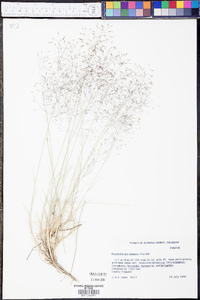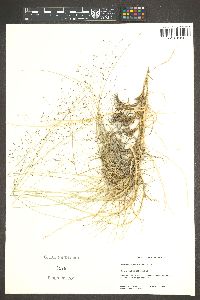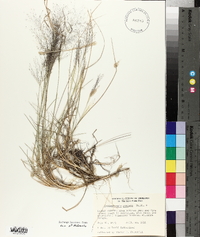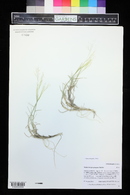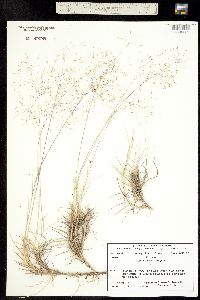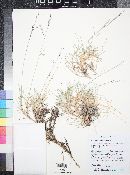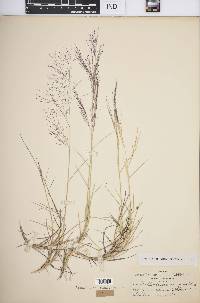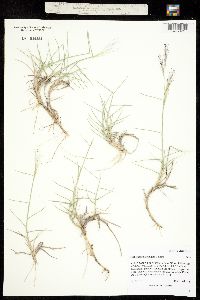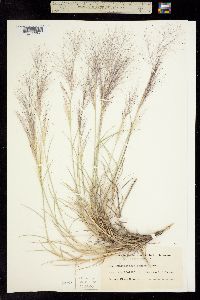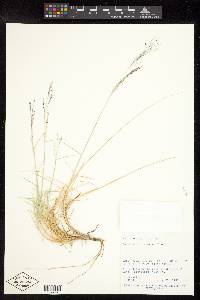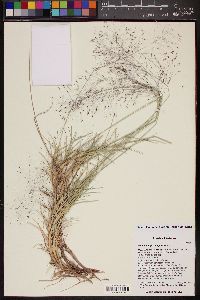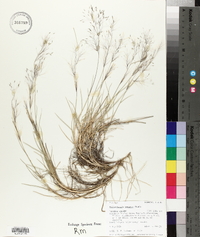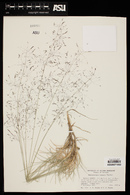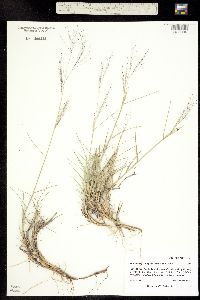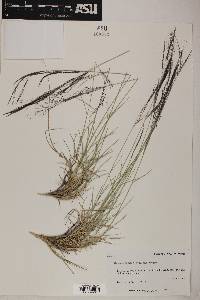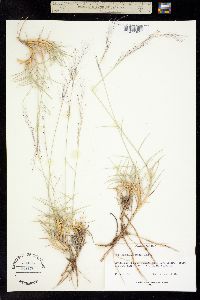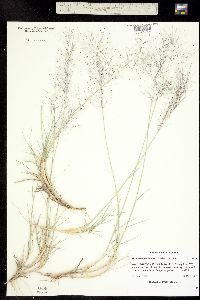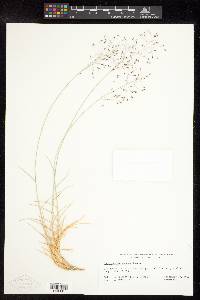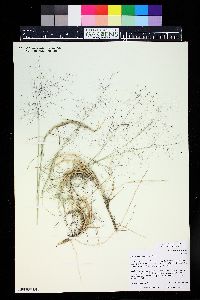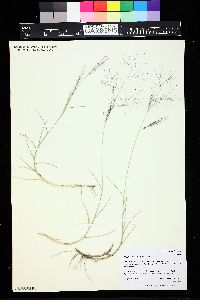
|
|
|
|
Family: Poaceae
Sandhill Muhly
|
Plants perennial; rhizomatous, not cespitose. Culms 10-70 cm, decumbent below; internodes cinereous-lanate, glabrous, or scabrous for most of their length, always cinereous-lanate below the nodes. Sheaths longer than the internodes, cinereous-lanate below, glabrous and smooth or scabridulous distally; ligules 0.2-1 mm, densely ciliate, obtuse, with lateral lobes; blades 2-8 cm long, 1-2.2 mm wide, flat to tightly involute, scabrous abaxially, hirsute adaxially, stiff, pungent. Panicles (7)8-16(19) cm long, (2)4-14 cm wide, open; primary branches 1.5-8 cm, capillary, straight, lower branches diverging 70-90° from the rachises in mature plants, often appearing fascicled in immature plants; pedicels 10-25 mm. Spikelets 2.6-4.5 mm. Glumes equal, 1.2-3 mm, purplish near the base, smooth or scabridulous distally, 1-veined, acuminate or acute, unawned or awned, awns to 1 mm; lemmas 2.6-4.5 mm, lanceolate, purplish, scabridulous distally and on the margins, apices acuminate, awned, awns 1-1.5(2) mm, straight; paleas 2.6-4.5 mm, lanceolate, glabrous, acuminate, 2-awned, awns to 1 mm; anthers 1.8-2.6 mm, purplish. Caryopses 1.8-2.5 mm, fusiform, brownish. 2n = 26, 42, 60. Muhlenbergia pungens grows in loose sandy soils near sand dunes to sandy clay loam slopes and flats in desert shrub and open woodlands, at elevations of 600-2500 m. It is known only from the western and central contiguous United States. FNA 2007, Field Guide to Forest & Mtn. Plants of N AZ 2009; Ann. Checklist GCNP 1987 Common Name: sandhill muhly Duration: Perennial Nativity: Native Lifeform: Graminoid General: Perennial, decumbent, with stems 10-70 cm cm tall, and wide, open panicles; rhizomatous. Vegetative: Blades 2-8 cm long, 1-2 mm wide, flat to tightly rolled, stiff, hirsute above, scabrous below, pungent; ligules to 1 mm long, ciliate, with lateral lobes; sheaths longer than the internode. Inflorescence: Panicles 8-16 cm long, 4-14 cm wide, open and loosely spreading; primary branches 1-9 cm long, slender, hair-like, lower branches diverging 70-90 degrees from the rachis when plant is mature; spikelets 2-4 mm long, usually 1-flowered, sometimes 2-flowered; glumes equal, 1-3 mm long, 1-veined, purplish around the base, may be awned or unawned with awns to 1 mm; lemmas 2-4 mm long, purplish, scabridulous distally and along the margins, awned, with awns 1 mm long; paleas 2-4 mm long, glabrous, 2-awned, with awns to 1 mm; anthers 2 mm long. Ecology: Found in sandy soils, desert shrub, mesas, canyon, and spon woodlands from 2000-8200 ft. (600-2500 m); flowers June-October. Distribution: Arizona, New Mexico, Utah, Colorado, Wyoming, Nebraska, South Dakota, Texas Notes: Is not found outside of the western and central United States. Spreads by forming lateral rhizomes. It rhizomes and open, spreading panicles distinguish it from several similar species. Ethnobotany: Used by the Hopi to make brushes and brooms Etymology: Muhlenbergia is named for Gotthilf Heinrich Ernst Muhlenberg (1753-1815) a clergyman and botanist from Pennsylvania; pungens means spiny, sharp-pointed. Editor: LKearsley, 2012 |

